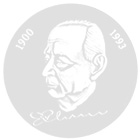Invention, international standardisation and propagation of the ”Controller Area Network” (CAN), which today dominates the world market
CAN Controller Area Network
The Nervous System of Embedded Controls
Since the beginning of the 80s the development of powerful digital communication systems has been shaping the world. Ethernet, by now with transfer rates beyond gigabit per second, evolved for commercial data processing within the office world and has now become indispensable for industry, administration and research. Based on Ethernet and its wireless counterpart, the Internet with the TCP/IP-protocols not only revolutionised the business world, but also private life.
But within the very cores of technical products yet another revolution took place mostly unseen, even by specialists. The advent of microelectronics and microcontrollers in the 70s not only lead to the PC but also to a much higher number of so called embedded controllers. Mostly invisible within the machines or their components and also increasingly within consumer items, they are vital for the functionality of the products. It is obvious that these embedded controllers need to communicate among themselves and with higher level computers. The Controller Area Network CAN has by now become the most important embedded communication system worldwide and created a market with a multi billion turnover. It is the central nervous system of all modern technical products.
Both the board of directors and the curatorship are proud to award Dr.rer.nat. Siegfried Dais and Prof. Dr.-Ing. Uwe Kiencke, two distinguished honourees, the Eduard-Rhein-Award for this famous German invention. Back then, their research aimed at the networking of control units within vehicles. By the early 80s, the extensive use of electronics within cars led to wiring harnesses of several kilometres length. The resulting problems in cost, weight and lack of reliability triggered intensive research programmes related to automotive communication systems in many laboratories. Under the direction of Dais and Kiencke, a research team of the Bosch company developed the Controller Area Network CAN in 1983. After the patent application in Germany in 1985 further patent applications followed in France, Japan and the United States. Finally CAN was published as international standard ISO 11898 in the year 1993 An important milestone for its international application.
The outstanding features of CAN robustness and cost-effectiveness resulted from the integration of all relevant requirements of the automotive industry in terms of response time, data integrity, network topology and especially the costs. CAN accesses the copper or fibre-optic medium via a deterministic collision prevention technique allowing multi-master operation as well as simultaneous transmission of telegrams to multiple slaves within milliseconds (multicast). The CAN-protocol supports the structured and highly efficient communication between the up to 100 control units of a car. To leverage the acceptance of the CAN-technology, Bosch cooperated with Intel and soon afterwards provided the first CAN-controller-chips to the market. Today almost every microcontroller vendor offers versions with integrated CAN interface boosting the worldwide application of CAN.
Allthough initially developed for automotive industry CAN is established as a communication system for technical systems in a broad range of application areas. This includes especially the application of CAN as fieldbus system in factory automation with its representatives CANopen and DeviceNet. CAN connects avionic systems in aeronautical applications as well as modern laboratory equipment in medical care. Other important application areas of CAN cover agricultural machinery and railway systems as well as building technology, e.g. for the control of elevators, where the advantages of CAN regarding data integrity are of special interest. But the list of applications also includes consumer goods such as washing machines, electric kitchen stoves and consumer electronics. Without even knowing each one of us uses at least 10 CAN-nodes in daily life.
CAN is one of the truly famous German inventions of the past decades that established itself and found worldwide acceptance and (with over 2 billion nodes sold) also has a very high economic impact. CAN fundamentally shaped the information technology of today’s modern cars and contributed to the high standard of the German automotive industry. The economic impact is even increased by the various other application areas that make use of CAN. Therefore CAN will reach the level of 4 billion sold nodes no later than 2010.
The Eduard Rhein Foundation honourees Dais and Kiencke, who have made their careers in industry and research, receive this well-deserved award. The Eduard Rhein Foundation honours these two important hidden champions who are just like their investion mostly known only by specialists.
Prof. Dr. Klaus Bender,
Techn. University Munich
